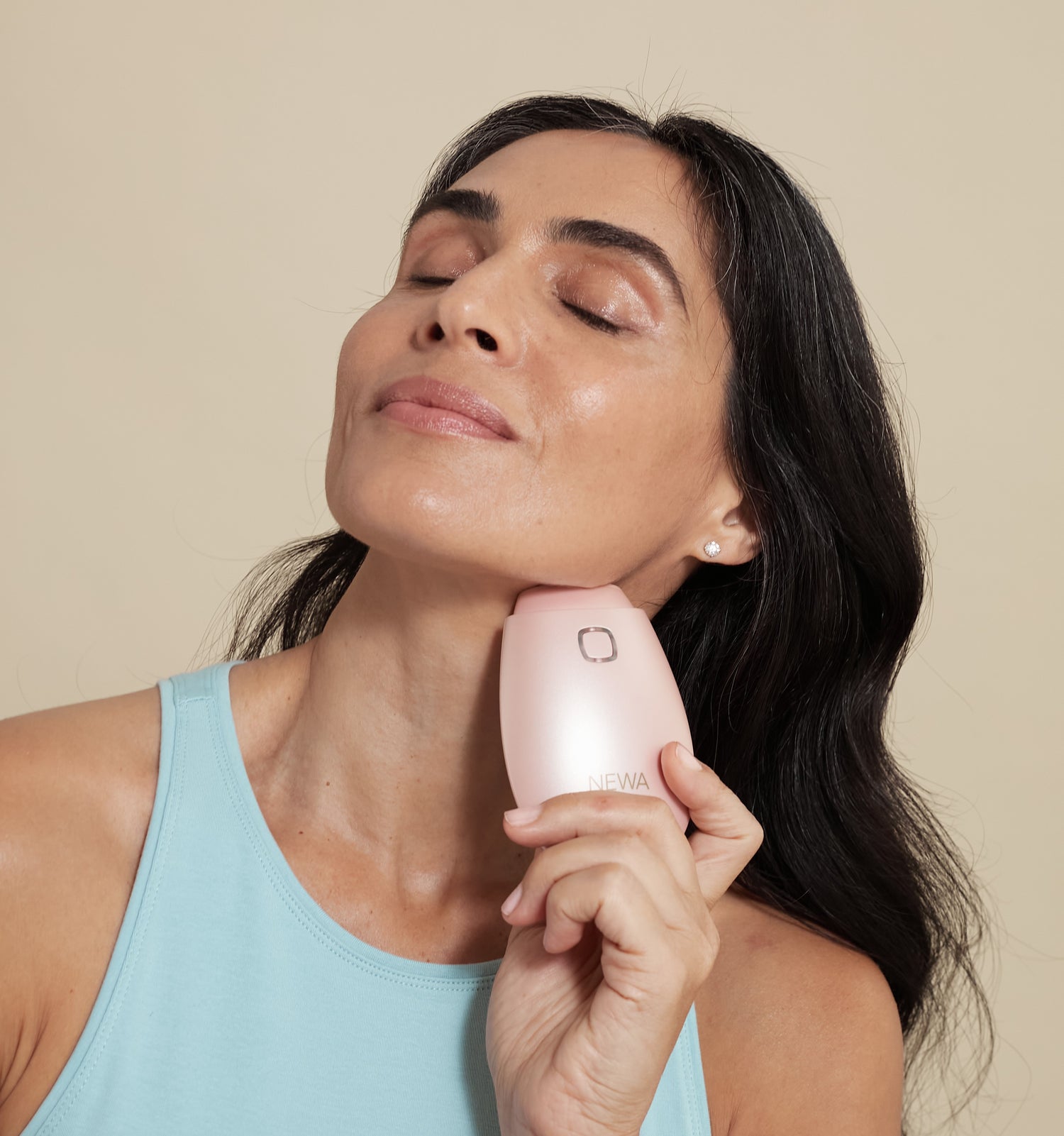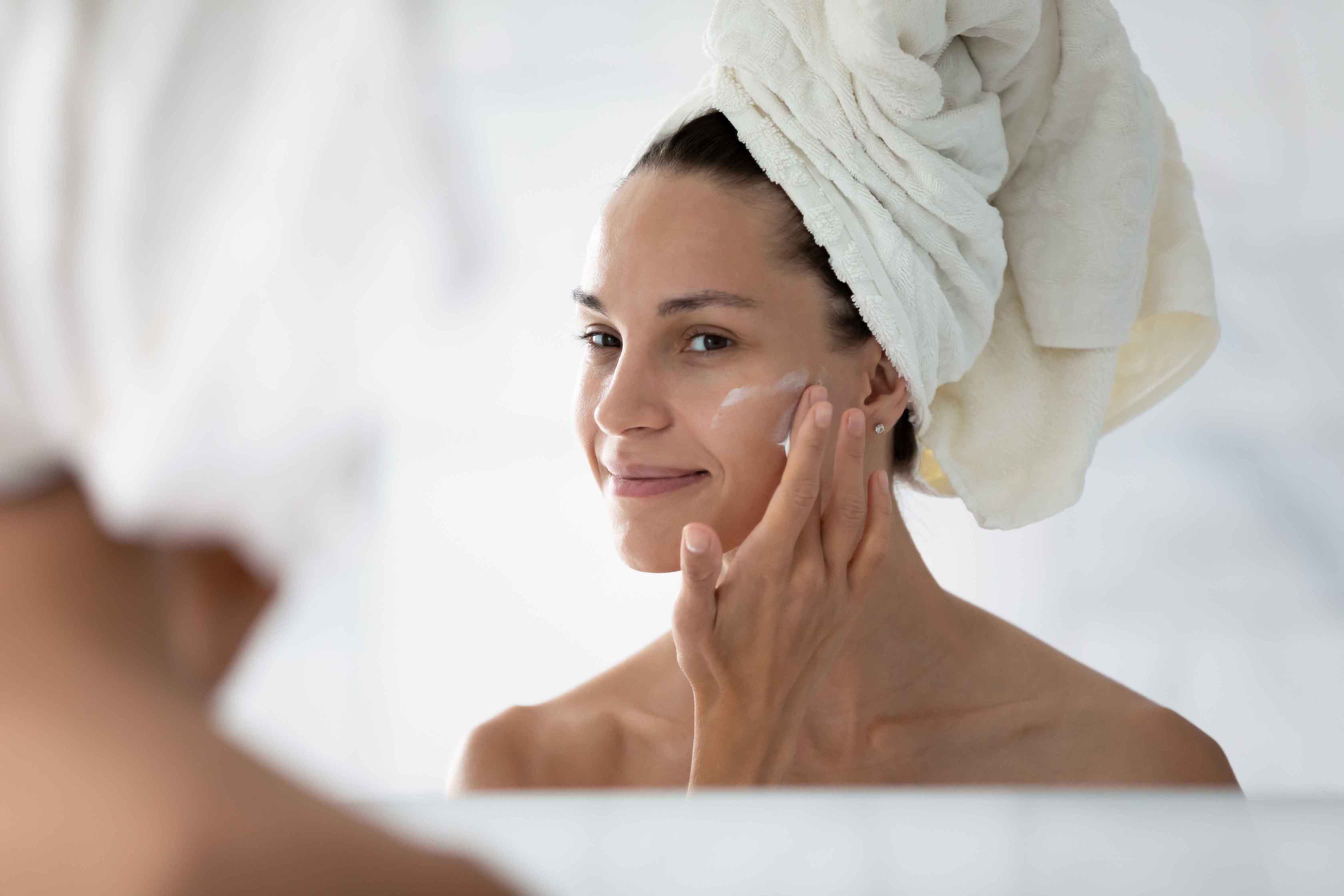What are collagen and elastin?
Collagen and elastin are two proteins responsible for skin tightness, firmness and elasticity. In other words, they are what keeps our skin from sagging. These proteins, which our body produces naturally, are stored in the middle layer of our skin, known as the Dermis, which accounts for about 90% of your skin’s thickness[1].
Collagen provides rigidity and strength to the skin. Elastin, as the name may suggest, is a source of elasticity and plumpness for our skin’s appearance. Elastin is the main component of elastic fibers in the skin, which provide resilience, stretch and recoil.[2] Elastin is mainly contained in major blood vessels, our lungs as well as our ligaments and tendons, besides the skin.
This is what differentiates collagen vs elastin: one provides strength and the other provides flexibility. But one isn’t better than the other. On the contrary, they are often mentioned together however because combined, collagen and elastin work together to keep our skin looking young and free of wrinkles.
What happens to collagen and elastin as we age?
Just like other natural processes in our body, our production of collagen and elastin slows down with age. It starts declining between the ages of 20 and 30 for collagen, and even earlier for elastin: we lose about 1% collagen and between 1 and 2 % elastin every year. In addition, elastin has a very low turnover and is susceptible to damage over time from many other factors[3]. This is also the case for Collagen: some of our lifestyle choices can accelerate its reduction in our skin[4]. As a result, the skin begins to sag and more lines and wrinkles appear on our faces.
What breaks down collagen and elastin?
Besides the natural aging process, there are other elements of our lives that can break down collagen and elastin faster and contribute to its deterioration and thus premature signs of aging.
- Genetics: Some people are genetically prone to earlier collagen and elastin loss than others.
- Menopause: The hormonal changes in women’s bodies during this time can also contribute to the deterioration of collagen and elastin.
- Smoking: The consequences of smoking and nicotine on the body are well documented, but they also extend to loss of collagen and elastic fibers in the skin.[5]
- Pollution: With urban lifestyle, we are exposed to environmental pollution on a daily basis. This also affects our skin’s appearance and breaks down the proteins responsible for keeping it plump and tight.[6]
- Sun exposure: The sun is the biggest enemy of the skin. It’s effects are well known, and include breaking down the skin’s collagen and elastin[7]. Let’s take a closer look at this next.
Collagen and elastin fibers in the skin can be destroyed by what type of UV light?
The sun’s UVA and UVB rays induce the activity of MMPs – matrix metalloproteinase. These MMPs are proven to be responsible for breaking down both collagen and elastin in our bodies.[8] This is what skin professionals call “photoaging”: the effects of sun exposure that accelerate the appearance of signs of aging on our faces.
How does losing collagen and elastin affect us beyond the skin?
When we lose collagen and elastin, it’s not just our skin that is affected. Other elements in our bodies can suffer from this loss.
Research shows that the breaking down of elastin can bring about and help progress various conditions including emphysema, which is a lung disease. It can also cause chronic obstructive pulmonary disease, atherosclerosis, metabolic syndrome and even cancer.[9]
Collagen too doesn’t just benefit our skin. It is also found in cartilage, which is the substance present in our joints and that allows us to move our bodies smoothly.[10] This means that with collagen loss, one could also begin experiencing joint pain and “wear and tear” arthritis or degenerative joint disease.
How to restore collagen and elastin
Now that you are aware of just how important these two proteins are for our skin and general health, you are probably wondering how to increase collagen and elastin as you age. There are many treatments for aging skin. The good news is that it is absolutely possible to help our bodies boost production of collagen and elastin. Here are the top solutions for this issue.
Collagen and elastin supplements
Studies have found that those who take collagen supplements saw an improvement in the appearance of wrinkles as well as the firmness, suppleness, and moisture content of the skin[11]. These usually come in the form of pills or powders to be mixed with drinks. However, the research also points out that it remains unclear if these improvements were actually due to the collagen in the products because they don’t just contain collagen. There are also vitamins, minerals, antioxidants, hyaluronic acid among other ingredients included in those products.
Keep in mind you should allow at least 8 weeks of taking collagen supplements consistently in order to potentially notice any results[12]. Dosage depends on the product you are using so follow the package instructions to know how much you should take and when. This is one way you can boost collagen in your skin.
When it comes to elastin, there are also supplements available containing elastin. In addition, taking herbal supplements, such as aloe vera, green tea or ginseng, can also increase the amount of elastin in your skin. It must be pointed out however that there is not enough research out there to say this definitely[13].
Foods that build collagen and elastin
Some foods are known to help our bodies produce collagen and elastin naturally. If you aren’t currently eating these foods, you may want to consider incorporating them into your diet as well.
Foods that build collagen include: bone broth, chicken, fish, egg whites, citrus, berries, tropical fruits, garlic, spinach, kale, cashews, tomatoes and peppers. Conversely, sugar and refined carbs can damage collagen content in our bodies[14]. Some of the above foods also work for boosting elastin like greens, citrus, fish, berries and nuts. Exercising can also help your body produce elastin[15].
Radio Frequency Therapy
Specifically when it comes to boosting collagen content in your skin, radio frequency therapy is a tool that can really yield results. RF devices use energy waves – known as radio waves– to help stimulate collagen production in our skin. When in contact with the epidermis, the surface level of the skin, these waves generate gentle heat, which penetrates into your skin’s deeper layer known as the Dermis. There, it stimulates the production of collagen and elastin, which results in skin firming and wrinkle reduction. This technology is non - invasive and completely pain free. RF treatments can be performed by professionals in clinics but are also available for at-home use for a fraction of the price using devices such as the FDA-cleared NEWA RF wrinkle reduction device.
Collagen and Elastin creams
We know you may already be googling “best body firming lotion for collagen and elastin” but listen up: creams that claim to contain collagen or elastin will unfortunately disappoint you and be a waste of money. That is because these proteins can't be absorbed through the epidermis in whole form and need to be broken down to work their way into our body. So they’ll just sit on your skin until washed off.
If you are looking for a topical solution for restoring both collagen and elastin, you should consider using retinoids. Retinoids are an ingredient used in skincare products and come from vitamin A, which is important not just for the skin but also for our vision, growth, reproduction, immune system and more. Vitamin A cannot be produced by the body; which is why it needs to be supplied. When it comes to the skin, this ingredient improves the appearance of wrinkles and combats sagging by triggering collagen as well as elastin production in our bodies[17].
Retinoids come in various forms to be applied topically. They also vary in strengths. It is important to use it as directed by a professional because the formulas can be irritating for the skin. They usually require a very small amount and it is important to use them only at night, because retinoids break down with sun exposure[18]. It can take a few weeks to see results, but if you stop using your retinoid product, the youth-boosting effects will stop too.
Conclusion
Collagen and elastin are an important duo when it comes to our skin and general health. Unfortunately, our body’s natural production of these two proteins slows down with age. When thinking about elastin vs collagen, it’s important to understand they each have a distinct role: while collagen is responsible for keeping our skin strong, elastin is charged with keeping it flexible and plump. As we grow older, it becomes more and more important to help our body continue to produce these two essential components using solutions such as: eating a well-balanced diet, avoiding sun exposure, but also using available at-home technology such as radio frequency therapy for skin tightening.
[6] https://www.ncbi.nlm.nih.gov
[7] pubmed.ncbi.nlm.nih.gov/19675548/




